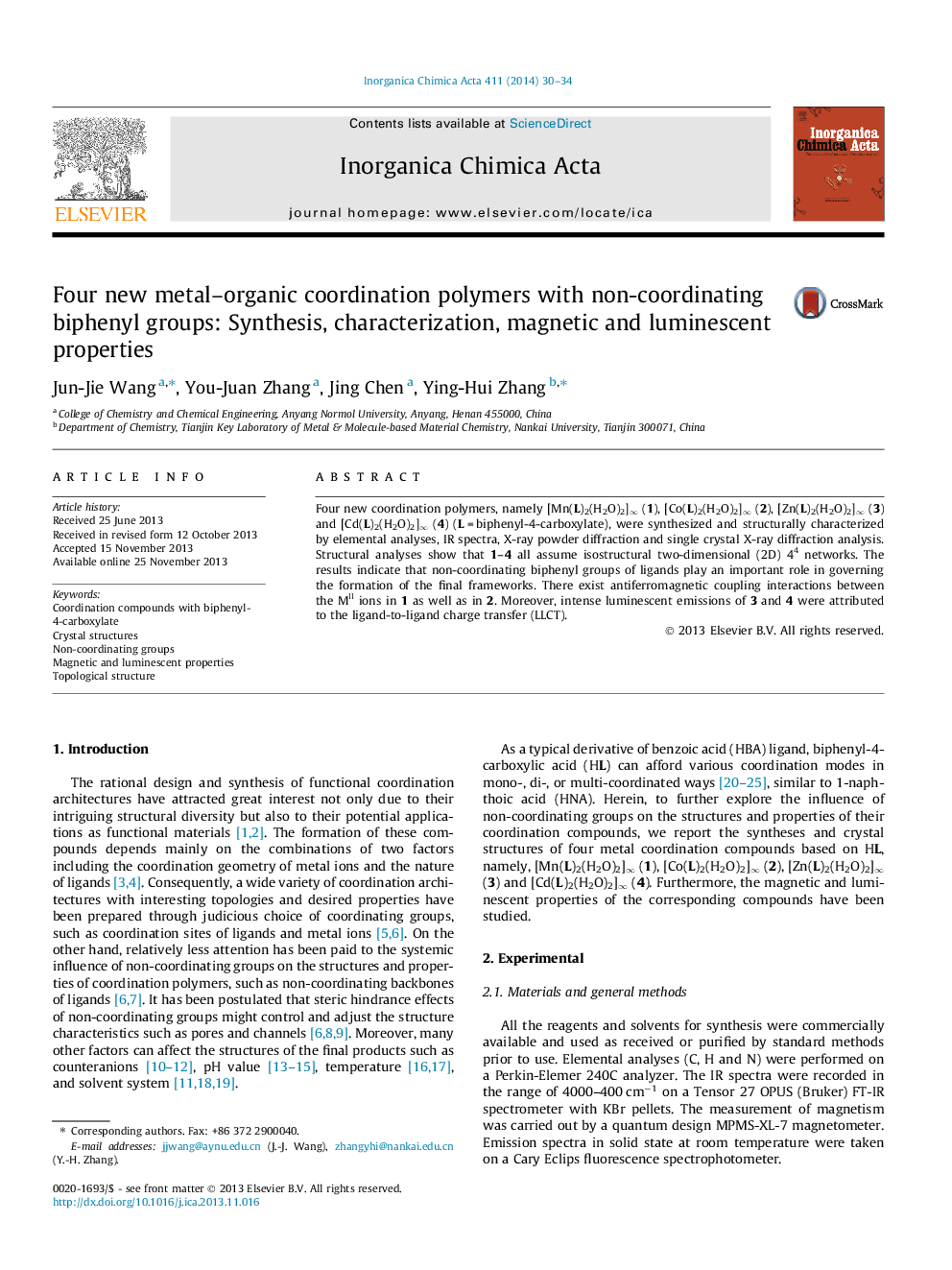| Article ID | Journal | Published Year | Pages | File Type |
|---|---|---|---|---|
| 1306967 | Inorganica Chimica Acta | 2014 | 5 Pages |
•Four isostructural metal–organic compounds were constructed.•Biphenyl groups of ligands play an important role in the formation of frameworks.•The magnetic and luminescent properties of these compounds were studied.
Four new coordination polymers, namely [Mn(L)2(H2O)2]∞ (1), [Co(L)2(H2O)2]∞ (2), [Zn(L)2(H2O)2]∞ (3) and [Cd(L)2(H2O)2]∞ (4) (L = biphenyl-4-carboxylate), were synthesized and structurally characterized by elemental analyses, IR spectra, X-ray powder diffraction and single crystal X-ray diffraction analysis. Structural analyses show that 1–4 all assume isostructural two-dimensional (2D) 44 networks. The results indicate that non-coordinating biphenyl groups of ligands play an important role in governing the formation of the final frameworks. There exist antiferromagnetic coupling interactions between the MII ions in 1 as well as in 2. Moreover, intense luminescent emissions of 3 and 4 were attributed to the ligand-to-ligand charge transfer (LLCT).
Graphical abstractFour new metal–organic compounds, showing isostructural 2D 44 networks, have been successfully constructed by using biphenyl-4-carboxylate ligands. The results indicate that biphenyl groups of ligands play an important role in governing the formation of the final 2D frameworks. And the magnetic and luminescent properties of corresponding compounds were studied.Figure optionsDownload full-size imageDownload as PowerPoint slide
